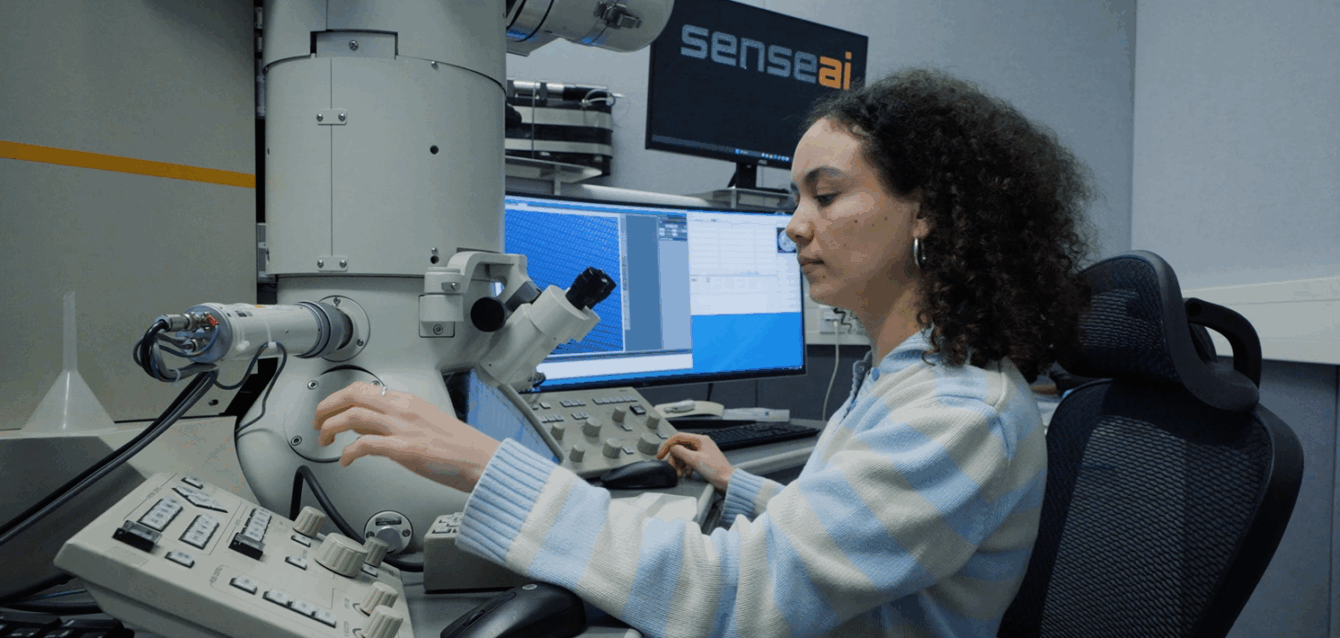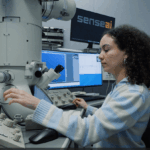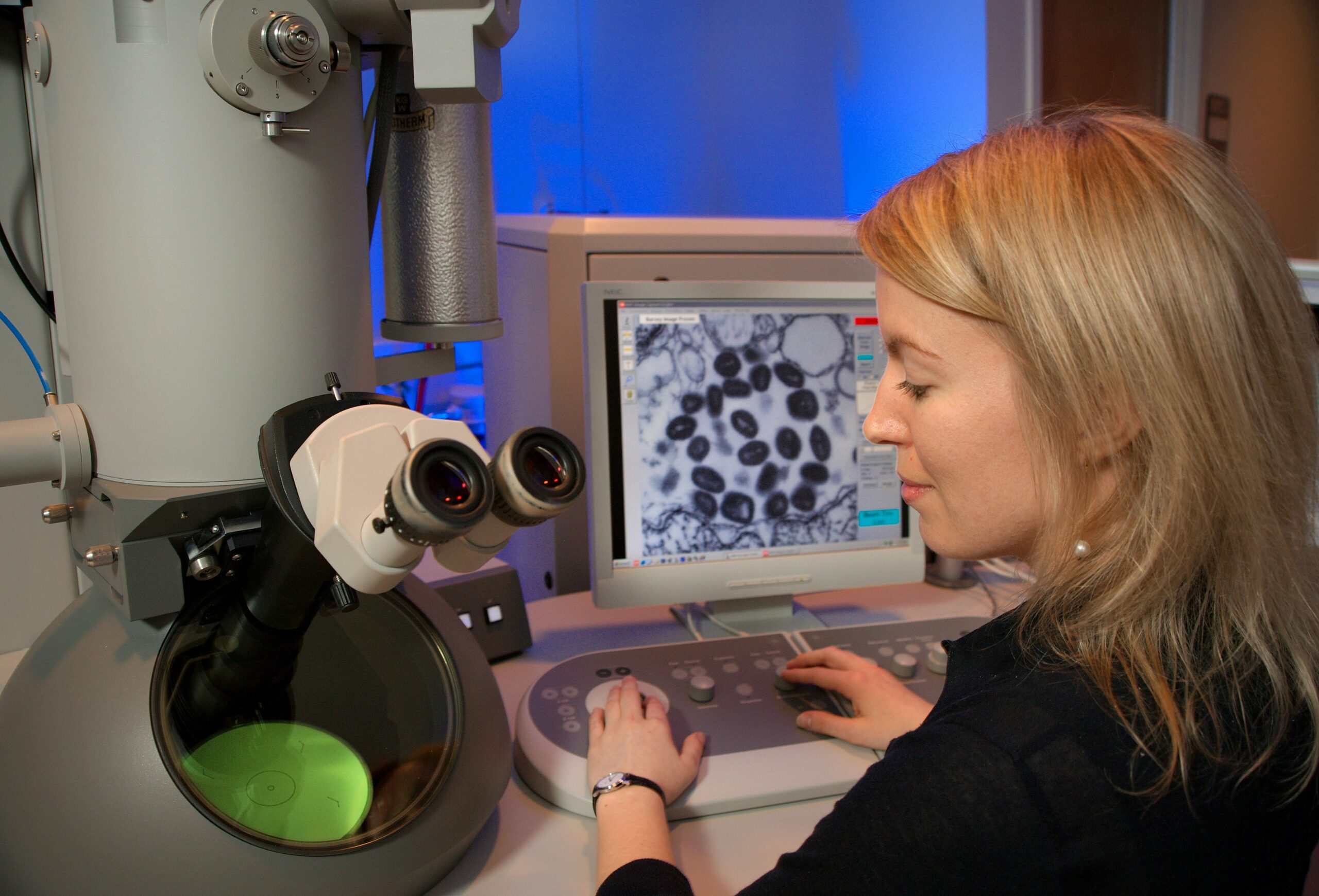Our electron microscopy imaging technology is being used by some of the leading laboratories across the world, on the most powerful of electron microscopes. Here, we’ve pulled together a quick overview of what we do, who should use it and why.
SenseAI in a nutshell
SenseAI is a UK spinout from the University of Liverpool. We’re transforming Electron Microscopy by enabling users to generate images faster, with minimal beam damage and up to 100x less data. Most importantly, there is no loss of integrity of the images.
What’s the technology
For any image formed in an electron microscope, there’s a certain number of electrons (and photons where applicable e.g. EDS) that are needed to ensure the image is of the highest quality. SenseAI has developed a form of compressed sensing which allows Electron Microscopy users to sparsely sample images. The number of electrons or photons required is dramatically reduced and SenseAI reconstructs a full image using advanced mathematical algorithms.
What are the gains for Electron Microscopy users
The key benefits of using SenseAI are three-fold: it avoids having damage to the things that we’re looking at; it allows us to get our images much quicker; and it uses up to 100x less data to capture and store those images.
For any user experiencing beam damage, slow acquisition speeds, low signal to noise and burdensome or expensive data volumes, SenseAI can provide a real off-the-shelf solution.
Crucially, the reconstructions are mathematically validated. The algorithms cannot ‘hallucinate’ (i.e. generate new/false information, common in many forms of AI) and therefore it can only generate an image of what the object is. In some cases the image is actually superior to the fully-sampled ‘normal’ image due to reduced charging effects, beam damage, and even blurring which is reduced due to the stroboscopic nature of sub-sampling.
Who can use SenseAI
Anyone who’s working on an imaging device can use SenseAI. It’s already being used in the fields of TEM, STEM, 4D STEM and Volume SEM and will also be available for EDS in the near future. It works on any machine and/or detector, either natively integrated or via an external scan generator plugged into the microscope.
When it comes to integrating with our other solutions and hardware, it’s simply a question of taking it, plugging into your system, and having the same image (or better) that you’re used to seeing coming out…just with a lot less data and minimal beam damage, all in real time. Because SenseAI develops the image in the same form that the device uses normally, it means there’s no real need for training. It’s just a question of plug it in and off you go.
Reach out to our team at info@senseai.vision for a live demo or more information.






